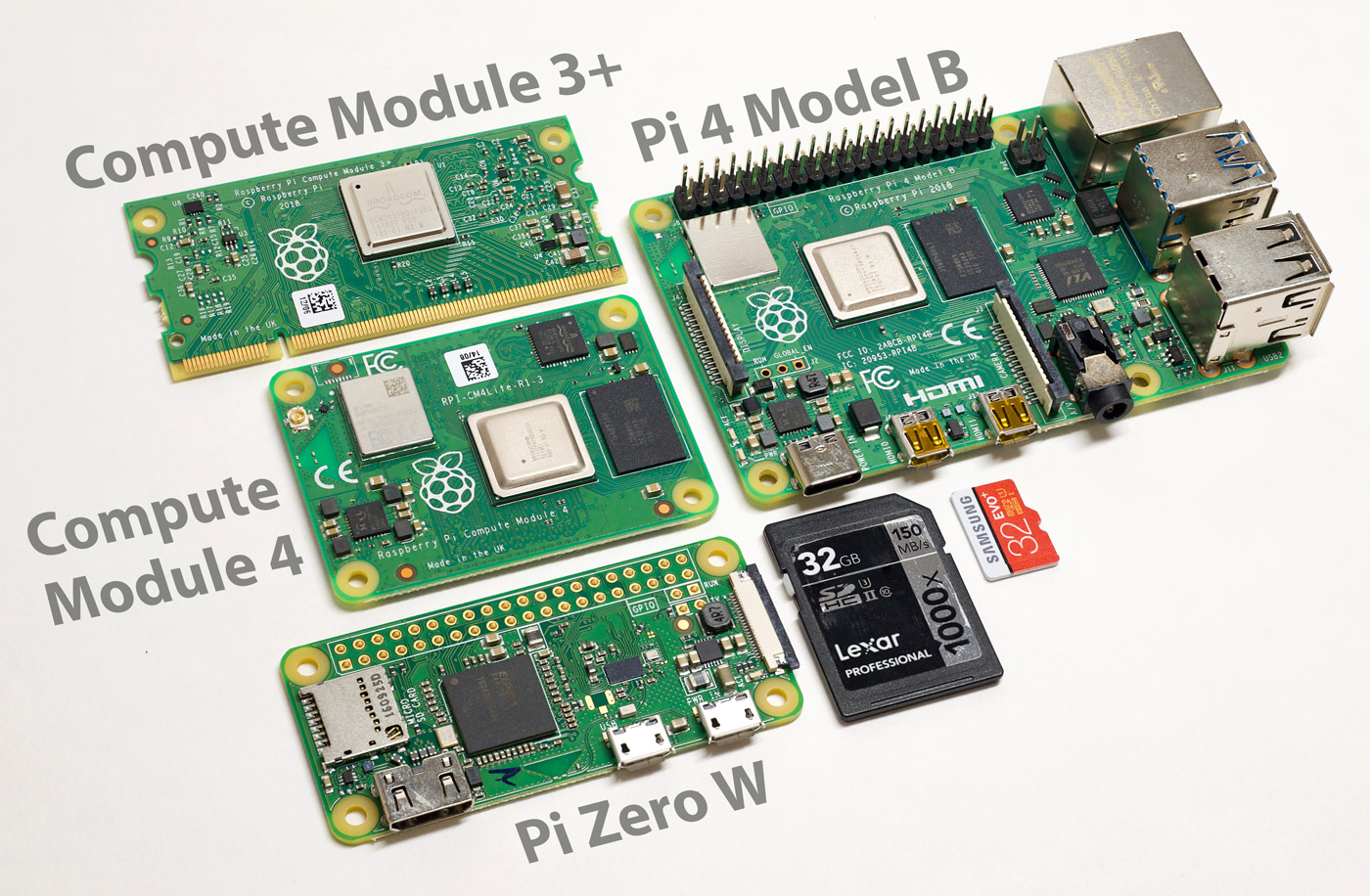What is a Raspberry Pi?

A Raspberry Pi is a series of small, single-board computers developed by the Raspberry Pi Foundation. Known for their compact size and cost-effectiveness, these controllers also offer low power consumption and support for various operating systems, including Raspberry Pi OS, or even custom software developed by hobbyists. They feature GPIOs, aka General Purpose Input/Output pins, allowing users to connect and control external devices for projects.
The Raspberry Pi lineup:
Raspberry Pi Model B (February 2012) Raspberry Pi Model A (February 2013)
Raspberry Pi Model B+ (July 2014)
Raspberry Pi 2 Model B (February 2015)
Raspberry Pi 3 Model B (February 2016)
Raspberry Pi Zero (November 2015)
Raspberry Pi 3 Model B+ (March 2018)
Raspberry Pi 3 Model A+ (November 2018)
Raspberry Pi 4 Model B (June 2019)
Raspberry Pi 400 (November 2020) Raspberry Pi Pico (January 2021) Raspberry Pi Zero 2 (October 2021) Raspberry Pi 5 (*Announced* September 2023)

(Compute Modules are a whole different story, but in short, they are just Raspberry Pis that are designed to be integrated into other projects.)
You can most of these Raspberry Pi’s on sale on the official Raspberry Pi website: https://www.raspberrypi.com/products/.
Multiple Raspberry Pi models can be used for different uses. For example, if you want to make a web server, choose a Raspberry Pi 3b+ or higher because web hosting is a resource-hungry application. If you want to make a drone, then stick to the Raspberry Pi Zero, or Zero 2 for a small, lightweight, but still powerful option.
Why are they so popular?
Raspberry Pi computers are popular for several reasons:
Affordability: Raspberry Pi devices are very reasonably priced, from just $3 to $80, making them accessible to a wide range of people, including students, hobbyists, and makers. Their low cost encourages experimentation and learning without a significant financial investment.
Versatility: Raspberry Pi can be used for a wide variety of purposes, from simple programming and web browsing to more complex tasks like home automation, robotics, media centers, and retro gaming consoles. The GPIO pins also allow for hardware tinkering and interfacing with the physical world.
Strong Community: Just like the Arduino, there is a large and active community of Raspberry Pi enthusiasts and developers who share knowledge, projects, and support through forums, websites, and social media.
It’s open Source: The Raspberry Pi operating system, called Raspberry Pi OS (formerly Raspbian), and many software applications for it are open source.
Low Power Consumption: Raspberry Pi devices are energy-efficient, making them suitable for applications where power consumption is a concern, such as battery operated projects.
Small Size: The compact form factor of Raspberry Pi makes it ideal for projects with space constraints or when a small computing device is needed.
What can you do with a Raspberry Pi?
With the Raspberry Pi, the sky’s the limit. Actually, there is no “limit”, as you can build drones, rockets, and even planes. With all the options and capabilities, here are some ideas for what you can do with them:
Retro Gaming Console: Turn your Raspberry Pi into a retro gaming console by installing emulators like RetroPie and classic game ROMs like Super Mario 64.
Network Attached Storage (NAS): Use your Raspberry Pi to create a personal cloud storage system. This way, you can store and access your files securely from anywhere on the internet.
Home Automation: Create a home automation system with your Raspberry Pi to control lights, appliances, and smart devices. You can use platforms like Home Assistant or OpenHAB for this.
Media Center: Transform your Raspberry Pi into a media center using Kodi or Plex. This allows you to stream and manage your media collection and access various streaming services, like a TV, which can turn it into a smart TV.
Weather Station: Build a DIY weather station with sensors to monitor temperature, humidity, and other environmental data.
Pi-hole: Set up a Pi-hole to block ads and tracking across your network. Even blocks YouTube ads.
Security Camera: Turn your Raspberry Pi into a security camera by connecting a camera module and using software like MotionEye. You can monitor your home remotely or even set up motion detection alerts.
Smart Mirror: Create a smart mirror that displays useful information like the time, date, weather, and news headlines.
Pi-powered Robot: Build a small robot using Raspberry Pi, a motor controller, and various sensors. You can program it to perform tasks like obstacle avoidance or remote control.
In summary, Raspberry Pi devices are versatile, affordable, and backed by a great community. They allow you to make a wide range of projects, from retro gaming to home automation, making them a popular choice for tech enthusiasts and hobbyists(Like me). With ongoing development like the Pi 5, there is no stopping now. So, whether you’re a novice or an expert, Raspberry Pi offers endless creative opportunities.






